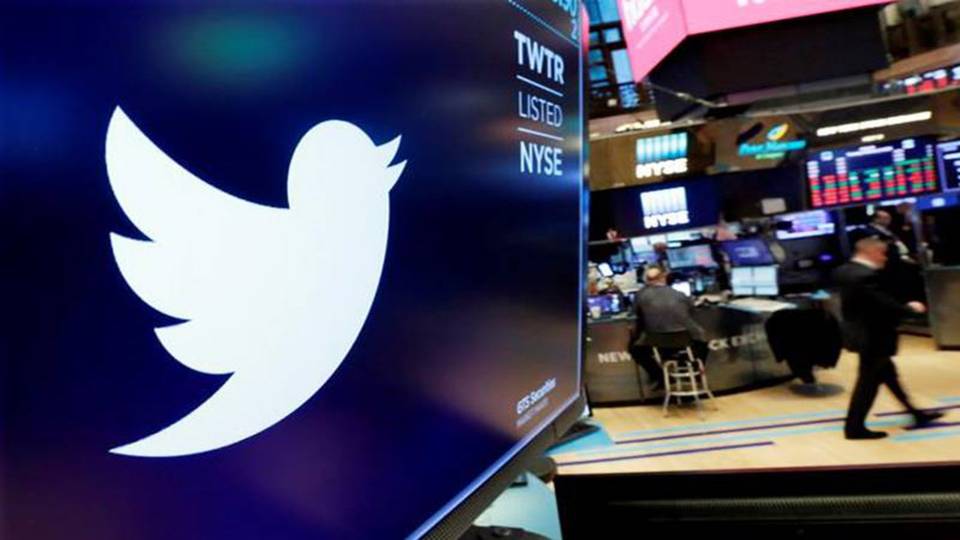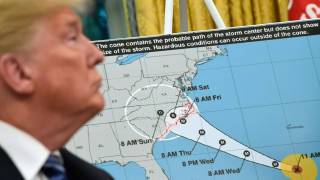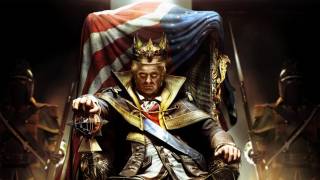In Bizarre Response, Twitter Tells Trump It Does Not Shadowban While Admitting It Does
In response to growing outrage over the practice of "shadow banning" conservatives, as confirmed last week by the liberal publication VICE and promptly tweeted about by President Trump, Twitter issued a strange explanation to "set the record straight," where they explicitly state that they do not engage in the practice - except then they describe how they do exactly that.
"People are asking us if we shadow ban. We do not. But let’s start with, “what is shadow banning?”
The best definition we found is this: deliberately making someone’s content undiscoverable to everyone except the person who posted it, unbeknownst to the original poster." -Twitter
Then, Twitter reiterates they don't shadow ban - with the caveat in parentheses that you may need to go directly to the timeline of some users in order to see their tweets. (tee hee!)
"We do not shadow ban. You are always able to see the tweets from accounts you follow (although you may have to do more work to find them, like go directly to their profile). And we certainly don’t shadow ban based on political viewpoints or ideology." -Twitter
In other words, Twitter says they don't shadow ban - it's just that tweets from people you follow may never appear unless you click directly into their timeline.
This is remarkable from $TWTR
— Barbarian Capital (@BarbarianCap) July 27, 2018
- defines shadowbanning
- says they don't shadowban
- then says that for some accounts you have to go visit them to see their tweets@jack you might need to take the nosering out and clean house pic.twitter.com/3sTlkDWM4G
Twitter's own employees admitted to the practice in a January undercover exposé, after investigative journalists with Project Veritas went undercover in San Francisco, Twitter's hometown.
The first clip features a former Twitter software engineer who explains how/why Twitter "shadow bans" certain users:
Abhinav Vadrevu: "One strategy is to shadow ban so you have ultimate control. The idea of a shadow ban is that you ban someone but they don't know they've been banned, because they keep posting but no one sees their content."
"So they just think that no one is engaging with their content, when in reality, no one is seeing it. I don't know if Twitter does this anymore."
Then there was Olinda Hassan, a Policy Manager for Twitter’s Trust and Safety team explains on December 15th, 2017 at a Twitter holiday party that the development of a system of “down ranking” “shitty people” is in the works:
“Yeah. That’s something we’re working on. It’s something we’re working on. We’re trying to get the shitty people to not show up. It’s a product thing we’re working on right now.”
Although Twitter presents itself as politically neutral, it’s culture behind closed doors is one of blatant censorship and systematic bias. Watch closely @jack, because you know we are. FULL VIDEO: https://t.co/Tqrd4FBr2v pic.twitter.com/DBOIcEvX8W
— James O'Keefe (@JamesOKeefeIII) January 11, 2018
In the full video (see below) Twitter Content Review Agent Mo Nora explains that Twitter doesn't have an official written policy that targets conservative speech, but rather they were following "unwritten rules from the top":
“A lot of unwritten rules, and being that we’re in San Francisco, we’re in California, very liberal, a very blue state.You had to be… I mean as a company you can’t really say it because it would make you look bad, but behind closed doors are lots of rules.”
“There was, I would say… Twitter was probably about 90% Anti-Trump, maybe 99% Anti-Trump.”
Meanwhile, Pranay Singh reveals again just how creepy Twitter can be by digging into your profile and conversation history to determine whether or not you're a "redneck" and therefore worthy of being banned:
“Yeah you look for Trump, or America, and you have like five thousand keywords to describe a redneck. Then you look and parse all the messages, all the pictures, and then you look for stuff that matches that stuff.”
When asked if the majority of the algorithms are targeted against conservative or liberal users of Twitter, Singh said, “I would say majority of it are for Republicans.”
And in October, 2016, Dilbert creator Scott Adams was "shadowbanned" by Twitter, which he noted on his blog:
This weekend I got “shadowbanned” on Twitter. It lasted until my followers noticed and protested. Shadowbanning prevents my followers from seeing my tweets and replies, but in a way that is not obvious until you do some digging.
Why did I get shadowbanned?
Beats me.
But it was probably because I asked people to tweet me examples of Clinton supporters being violent against peaceful Trump supporters in public. I got a lot of them. It was chilling.
Late last week my Twitter feed was invaded by an army of Clinton trolls (it’s a real thing) leaving sarcastic insults and not much else on my feed. There was an obvious similarity to them, meaning it was organized.
At around the same time, a bottom-feeder at Slate wrote a hit piece on me that had nothing to do with anything. Except obviously it was politically motivated. It was so lame that I retweeted it myself. The timing of the hit piece might be a coincidence, but I stopped believing in coincidences this year.
Brad Parscale, along with Republican National Committee (RNC) Chairwoman Ronna McDaniel, wrote a letter in May calling for the CEOs of Facebook and Twitter to address concerns over conservative censorship ahead of the 2020 election, as well as a call for transparency.
"We recognize that Facebook and Twitter operate in liberal corporate cultures," the letter reads. "However, rampant political bias is inappropriate for a widely used public forum."






















